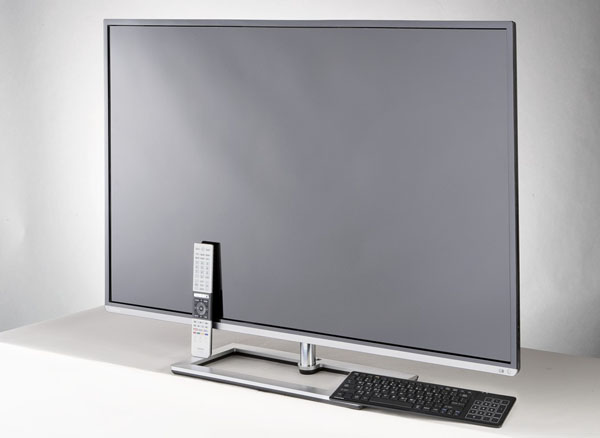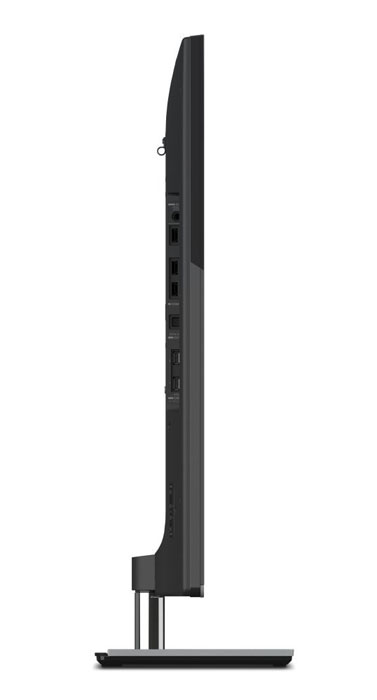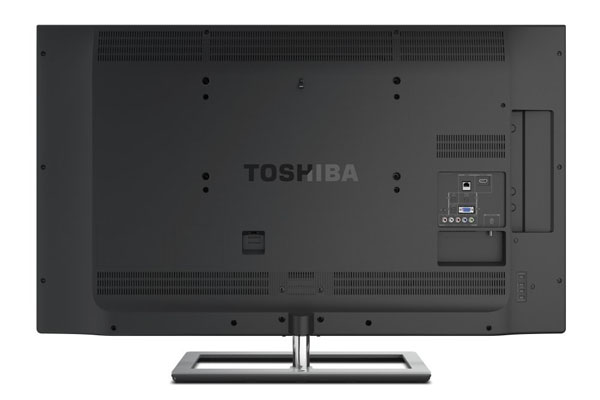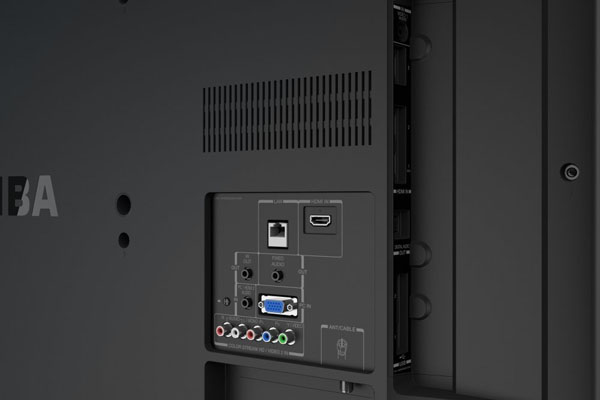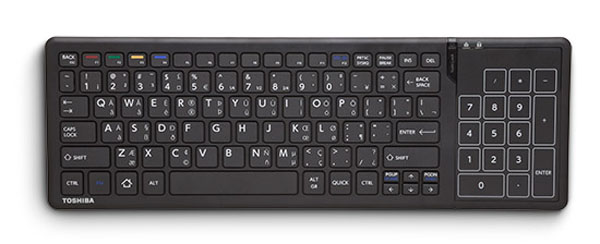Toshiba 50L7300U Review: A 50-Inch LED HDTV With Wi-Fi
You've seen us dramatically increase our display coverage over the last year, and now we're reviewing HDTVs too. Our first screen is Toshiba’s 50-inch L7300U Cloud TV with Wi-Fi. We run it through our lab and usability tests to see how it measures up.
Toshiba 50L7300U Physical Characteristics
The name of the game in HDTV styling these days is to make the bezel and panel as thin as possible. Even though a majority of consumers set their televisions on a bench or credenza, there’s something sexy about a super-thin display hanging on the wall like a piece of art. And because we all have family members who consider the TV an eyesore, manufacturers strive to create the most aesthetically pleasing experience possible.
Product 360
Toshiba follows this design principle by making its bezel only 14 mm wide at the top and sides and 23 mm across the bottom. The only other features up front are a small power LED, the remote’s IR receiver, and an ambient light sensor. The metal base attaches with four screws and allows for about 25 degrees of swivel.
The 50L7300U has a nice slim profile, which makes it very easy to achieve a flush wall mounting. The only thing that keeps the panel from being less than two inches thick is the speaker bulge at the bottom. As on most HDTVs these days, the speakers fire downward and are fairly small. Despite their diminutive form factor, though, they sound pretty good.
The back is well-ventilated at the top and bottom, although the set doesn’t run particularly hot. You can see the input panel at the right. Lower and further right is a small control panel with buttons for power, volume up and down, and a mode key. Pressing that turns the volume buttons into either channel up/down or input selectors. The threaded inserts for a wall bracket are here too. The 50L7300U accepts a 200 x 400 mm bolt pattern with M6 threads.
The side-facing input panel has three HDMI and two USB ports. There is also a composite video jack that requires a 3.5 mm to RCA adapter that is not included. Rounding out the side panel is an optical digital output.
Facing the rear is another composite video input plus RCA connectors for component video and stereo audio. There’s a 3.5 mm audio input and a VGA 15-pin D-sub as well. You also have the requisite antenna input, which faces down, an Ethernet port, and a fourth HDMI input.
Included in the package is a Bluetooth keyboard that works with a tiny receiver plugged into one of the USB ports. Pairing is immediate when you power the keyboard on. It also has a touchpad for controlling the on-screen cursor. The keyboard itself is great, though the mouse action is fairly laggy and imprecise. We found it quicker to simply use the Tab or arrow keys to navigate the browser and other cloud apps.
Get Tom's Hardware's best news and in-depth reviews, straight to your inbox.
The remote is a pretty standard wand. It’s logically laid out and the TV responds quickly to most commands (except for when you access the Internet; then you'll have to wait a few seconds for anything to happen). When you’re sending standard TV commands, though, the remote works fine. My biggest complaint is that the CT-90428 is not backlit. It is fairly easy to operate by feel, fortunately. You can use it as a universal remote too, as it has multiple modes and transport keys to operate things like DVRs and Blu-ray players. Toshiba thoughtfully includes IR blasters that connect to the 50L7300U so you can operate components not in line-of-sight. You can also control other Toshiba devices through the HDMI CEC feature.
Current page: Toshiba 50L7300U Physical Characteristics
Prev Page Toshiba 50L7300U Cloud TV: Tons Of Features At A Reasonable Price Next Page OSD Setup And Calibration
Christian Eberle is a Contributing Editor for Tom's Hardware US. He's a veteran reviewer of A/V equipment, specializing in monitors. Christian began his obsession with tech when he built his first PC in 1991, a 286 running DOS 3.0 at a blazing 12MHz. In 2006, he undertook training from the Imaging Science Foundation in video calibration and testing and thus started a passion for precise imaging that persists to this day. He is also a professional musician with a degree from the New England Conservatory as a classical bassoonist which he used to good effect as a performer with the West Point Army Band from 1987 to 2013. He enjoys watching movies and listening to high-end audio in his custom-built home theater and can be seen riding trails near his home on a race-ready ICE VTX recumbent trike. Christian enjoys the endless summer in Florida where he lives with his wife and Chihuahua and plays with orchestras around the state.
